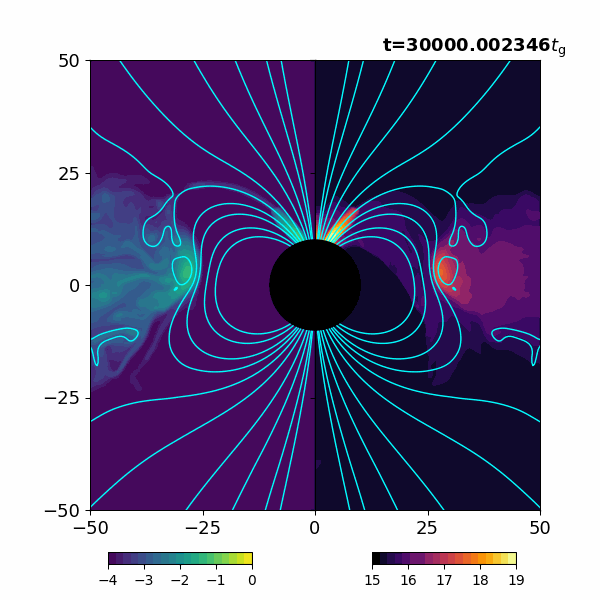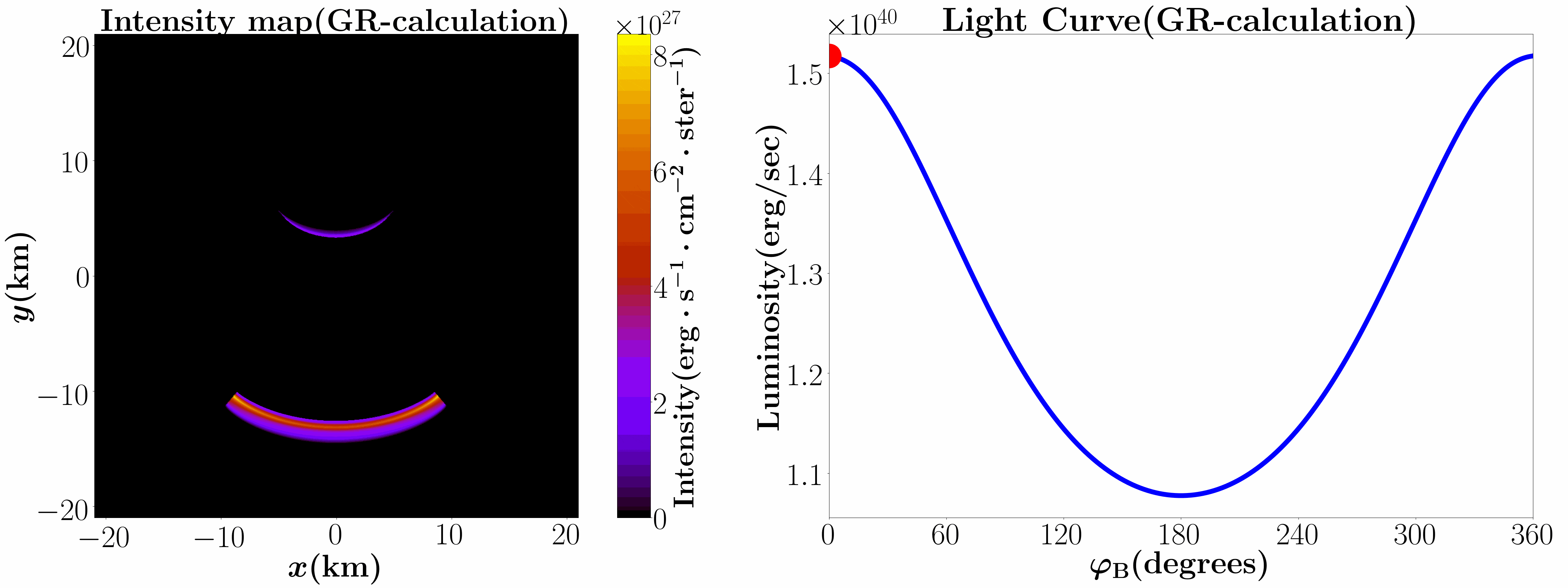Publications
1.
Pulsed fraction of super-critical column accretion flows onto neutron
stars: modeling of ultraluminous X-ray pulsars
Akihiro Inoue, Ken Ohsuga and Tomonisa Kawashima, 2020, PASJ, 72, 34
2.
Modeling of Thermal Emission from ULX Pulsar Swift J0243.6+6124 with General Relativistic Radiation MHD simulations
Akihiro Inoue, Ken Ohsuga, Hiroyki R. Takahashi and Yuta Asahina, 2023, ApJ, accepted
brief explanation
■General relativistic radiation magnetohydrodynamical (GR-RMHD) simulation of super-Eddington accretion flows onto neutron star with dipole magnetic fields
keywords : neutron star, MHD, super-Eddington accretion, general relativity
coworker : Ken Ohsuga(Univ. of Tukuba), Hiroyki R. Takahashi(Komazawa Univ.), Yuta Asahina(Univ. of Tsukuba)
abstract
Neutron stars, which might be the central engine of the ultra-luminosity X-ray pulsars, produce strong gravitational and magnetic fields.
In addition, a strong radiation field is generated by gas accretion onto neutron stars.
Therefore, it is necessary to perform the GR-RMHD simulation that takes all these effects into account
in order to elucidate the accretion phenomena around ULX pulsars.
We performe the GR-RMHD simulation of using GR-RMHD code, UWABAMI, developed by Takahashi & Ohsuga 2017.

gas density (left), radiation energy density (right) and magnetic field lines (cyan lines)
The accretion disk is truncated by the strong dipole magnetic field of the neutron star. Column accretion flow near the magnetic poles of the neutron star are formed. The radius at which the disk gas is truncated ( ~ magnetospheric radius) depends on the magnetic field strength of the neutron star and the mass accretion rate. In this study, we investigate the magnetospheric radius and other accretion structures by varying the magnetic field strength of the neutron star and the mass accretion rate.
■Calculation of X-ray pulses from an ultra-luminous X-ray source using the supercritical accretion column model for neutron stars
keywords : neutron star, super-Eddington accretion, general relativity
coworker : Ken Ohsuga (Univ. of Tsukuba), Tomohisa Kawashima(NAOJ)
abstract
Ultra-Luminous X-Ray Sources (ULXs) are extremely bright X-ray sources whose X-ray luminosity exceeds the Eddington luminosity of stellar-mass black holes.
Stellar-mass black holes and intermediate-mass black holes have been considered as the central sources of ULXs, but recent detection of pulsation has led to the identification of some ULXs as
revealed that they are neutron stars. Since the mass of neutron stars is comparable to that of the Sun, supercritical accretion (accretion above the Eddington accretion rate) to explain the high luminosity of ULXs
is essential to explain the large luminosity of ULXs. Therefore, we studied X-ray pulses using the supercritical accretion column model proposed by Kawashima et al. 2016

Image of super-critical accretion column (left) and pulse shape (right)
Here, the angle between the magnetic axis and the rotation axis is 10°, and the observer's viewing angle (the angle between the observer and the rotation axis) is 60°. Shock waves generated inside the accretion column raise the gas temperature in the vicinity of the neutron star and the radiation at the base of the accretion column becomes large. The accretion column at the back of the accretion column appears brighter due to the relativistic Doppler effect. The accretion column appears to expand due to the gravitational lensing effect. The observed luminosity changes as the neutron star rotates. Light Curve is the apparent luminosity observed by observers. The red dots correspond to the phases of Image.
